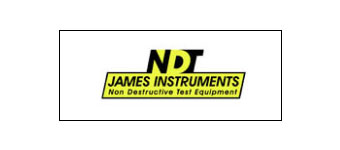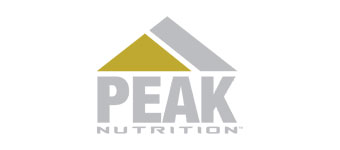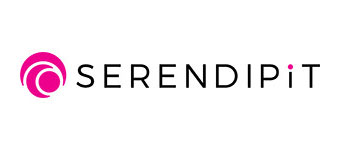Rather than wandering in the dark, trying to build a business from scratch and best guesses, follow the blueprint of the titans like John D. Rockefeller and learn the Rockefeller Habits.
After the oil industry moved from a start-up industry to a scale up industry, it was John D. Rockefeller that brought a disciplined approach to growing his enterprise including capturing a 100X advantage that CATAPULTED him past his competition who were still following a helter-skelter approach to business.
Mastering the Rockefeller Habits focused around 4 key components of business growth.
Mastering the Rockefeller Habits
Priorities
What are the handful of rules for the organization not likely to change? (Core Values). The BHAG or 10 Year Vision, and the 5 Priorities for the year, quarter, and week.
Data
What are the handful of rules for the organization not likely to change? (Core Values). The BHAG or 10 Year Vision, and the 5 Priorities for the year, quarter, and week. What are the key metrics that if your company tracked would immediately tell you the health of the organization? These metrics must be focused on both the long term and short term aspects of the business. Then honing in what is the Critical Number for the quarter. If we ONLY hit this specific, measurable, priority, the quarter will be a success.
Rhythm
If your team isn’t making fun of you for repeating the same things over and over, you haven’t gotten the message home. Rhythm is the set of well-organized, set agenda meetings that happen daily, weekly, monthly, quarterly, and yearly for your organization.
X-Factor
By capturing the Key Constraint in the industry and OWNING it, John D. Rockefeller was able to catapult ahead of his competition. That key constraint was transportation of crude oil. Once you’ve clarified your Brand Promise, and figured out the Key Constraint in your industy, OWN it!
Mastering the Rockefeller habits was a groundbreaking “how-to” manual for aggressive business growth. If you haven’t read it yet, don’t sweat. Scaling Up- Mastering the Rockefeller Habits 2.0 has all the key components of Mastering the Rockefeller Habits and more. Save yourself the time and read Scaling Up instead, you’ll thank me.
Mastering the Rockefeller Habits Summary or What are the Rockefeller Habits
When Mastering the Rockefeller Habits was first published in 2002 by Verne Harnish, it was a breath of fresh air for small & middle market business owners and entrepreneurs.
With thousands of new business books written every year, it feels like MOST books are heavy on theory and light on practical how to. Busy entrepreneurs don’t have time to try and “figure out” how to apply interesting theory in their business. They need a practical “how to” guide and Mastering the Rockefeller Habits is just that.
In fact, some of the most successful entrepreneurs in EO and YPO give praise to the Rockefeller Habits for the impact they’ve had on their companies success. The book outlines the business fundamentals that John D Rockefeller leveraged to become one of the wealthiest human beings to ever live.
Adjusted for inflation, his net worth was $418 BILLION. Roughly 2X that of Elon Musk or 3X Jeff Bezos! Nothing to sneeze at for sure. And the fundamentals and tools outlined in the book are timeless, lasting over 100 years and yet still relevant today.
If you’ve ever felt like growing your company sometimes feels nearly impossible, you’re not alone.
The Three Barriers to Growth Every Company Faces
In the U.S. alone, there are roughly 28 million “firms”. Or companies. Out of these 28 million firms, less than 4% ever grow past $1mm in annual sales. And out of these firms, less than 10% grow past $10mm in annual sales. And ultimately, under 17,000 companies pass $50mm in annual sales.
Along the path of growing up your company, you’re likely to encounter three major barriers.
- Leadership Development
The timeless adage, “as goes the leadership team, goes the company” is 100% accurate. Your company can only grow as fast as you, the CEO and the leadership team. The fact is, as the firm scales your managers must shift their focus from managing to coaching their people. Along with that, mastering the abilities of delegation and prediction from a financial perspective. The fact is; leadership development is never ending. As my Mom loved to tell me, you’ll be done learning when you’re dead. - Scalable Infrastructure
As you grow your firm from 20 to 50 employees, you may not only outgrow your office space, but you’re going to need software that can keep up with managing the day to day also. The infrastructure of your company includes the tangibles like office space, software, and equipment. It also includes the intangibles.Consider the additional complexity in communication that doubling your employee count adds, it’s literally an exponential increase in complexity each person that’s added. To deal with this, you need specific communication rhythms for everyone in the company to keep them aligned and on the same page. - Marketing Effectiveness
Warren Buffett loves to say, that “Mr Market” is your 3/5ths partner. Well, the market can either make you like brilliant or incompetent really fast. When things are going your way, it covers a whole lot of mistakes. When things reverse, many entrepreneurs get exposed. (Just think back to the financial crisis of 2008 & it’s lasting impacts).To keep growing your company, it’s critical that the CEO & Senior Leadership team have a pulse on what’s happening in the marketplace. New competitors are showing up every day, strategic advantages are constantly being copied by competitors, and customers needs are shifting with new technology. Your strategy and marketing must be ready to keep up.A key benefit of the Rockefeller Habits once implemented, is they will reduce the senior leadership teams time to manage by up to 80%, so you can spend more time on market facing activities.
Three Key Fundamentals for EVERY Organization to Master
- Priorities
If everything is a priority, then nothing is! As your company grows, it becomes more critical to keep everyone in the company focused around the same handful of things, 5 to be exact. There’s a tipping point around 25 employees that as founder or CEO you can no longer interact with revenue on a day to day basis and keep them aligned, so we have to rely on priorities to do that.The key here is 5 company priorities for the year, then the quarter, focused on the organization. From there, have the priorities cascade throughout the company so that every member of the team is helping carry the load to execute on the 5 company priorities. - Data
At that critical 25 employee mark, maybe earlier, it becomes nearly impossible anymore to manage by “gut”. We have to leverage data or KPIs to help manage the company more effectively. The key here is, everyone has 3 to 5 numbers they report on in the weekly meeting that tell them but also their direct supervisor if they had a good day/week.The other side of this is mastering the ability to project and predict the future with dialed in KPIs. How will we be doing as an organization in 6 to 10 weeks? What might we need to adjust so that we have a great week in spite of challenges ahead. - Rhythm
The meeting rhythms of an organization are the heartbeat of the business. They have to happen at the same day, time, and place every work day. Same agenda. Same people. Starting with the leadership team and cascading to the front lines. Having an aligned rhythm allows information to flow smoothly up and down the lines while issues get solved fast to keep the organization growing in a healthy way.
Next Steps:
If your an owner or leader of a small to middle market firm, buy a copy of Mastering the Rockefeller Habits and read it with the leadership team first. Then decide, what do we tackle next.
I also host workshops for companies to help them both learn and implement the Rockefeller habits in their companies. If you’d like to learn more about workshops click the link here (workshop.transcendgrowth.com)













